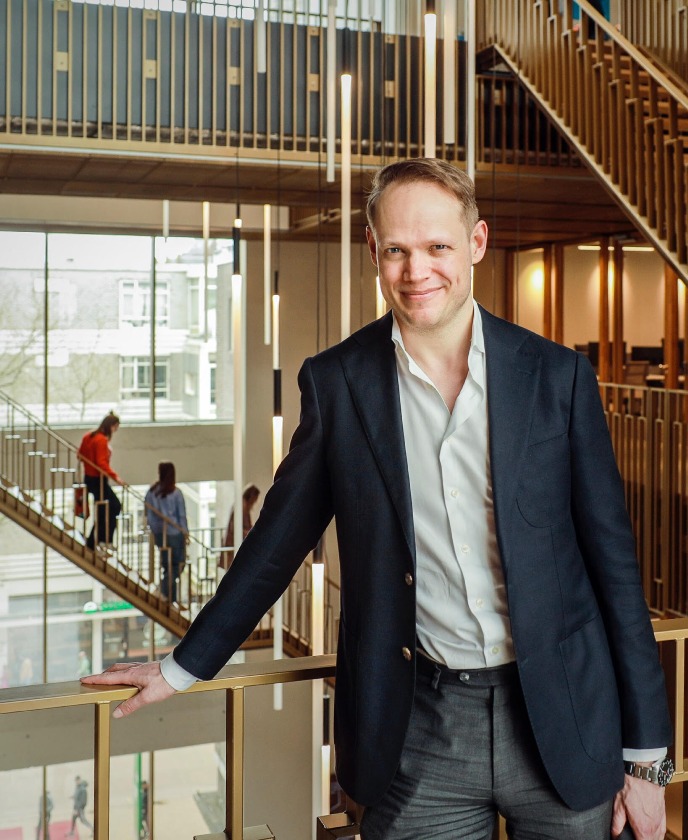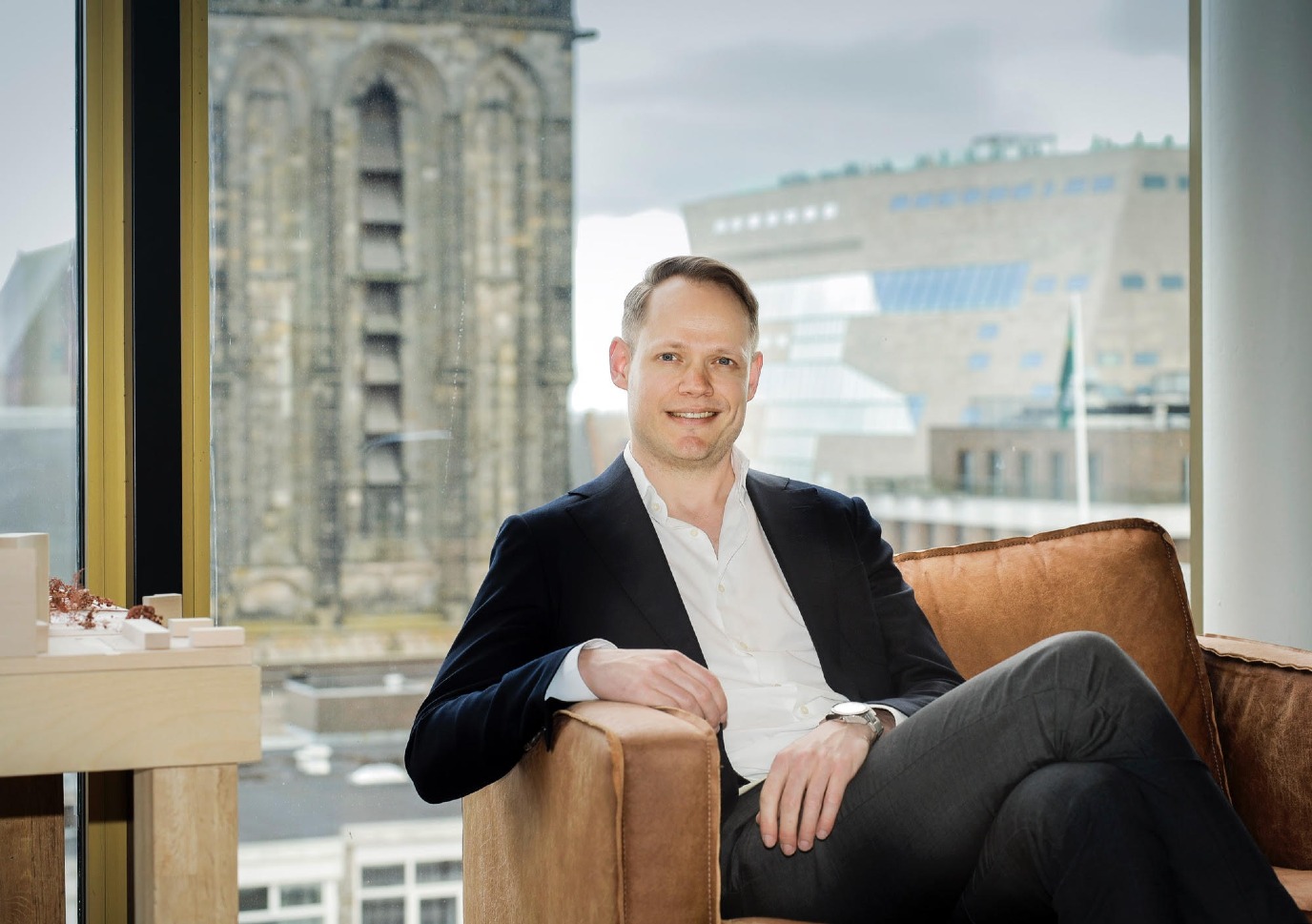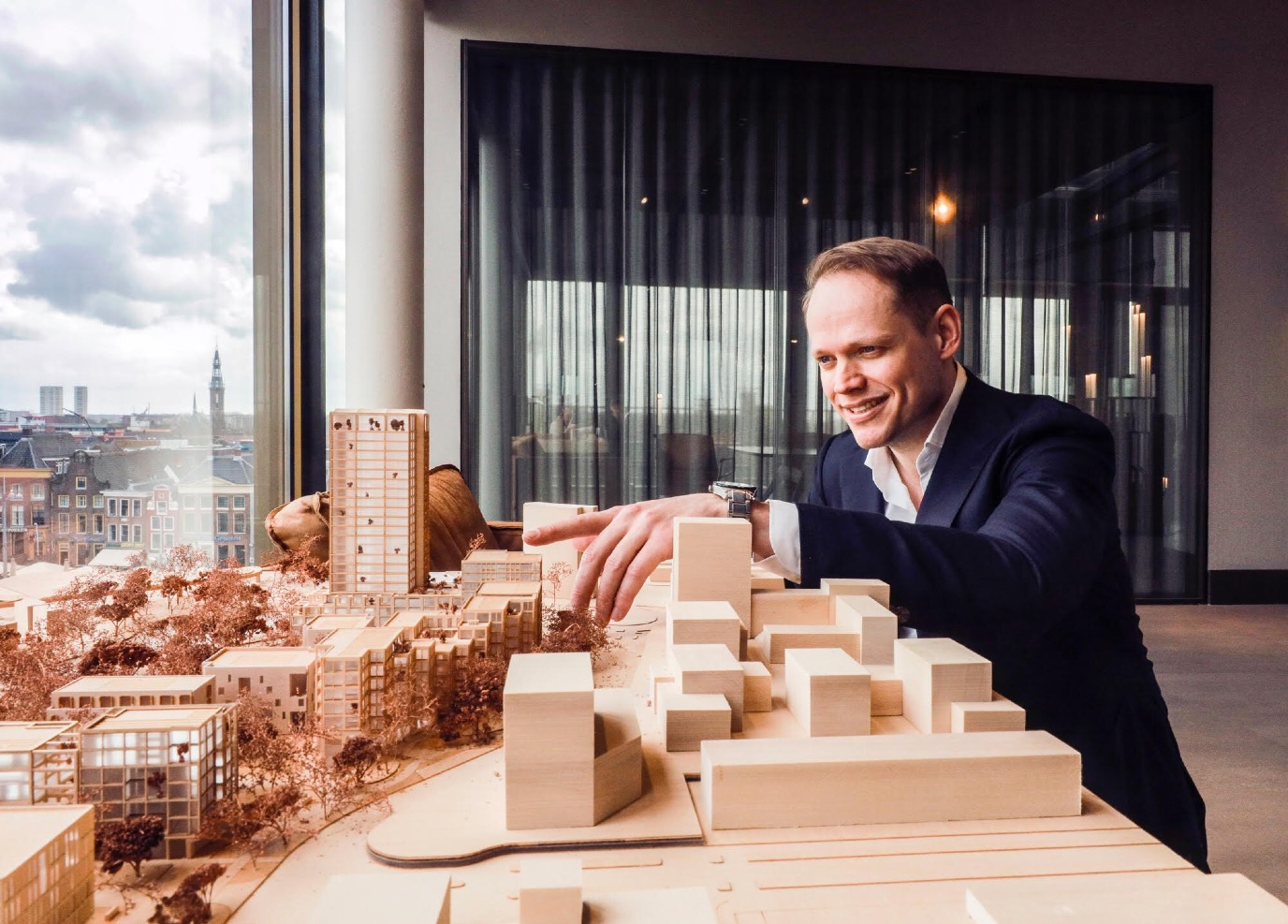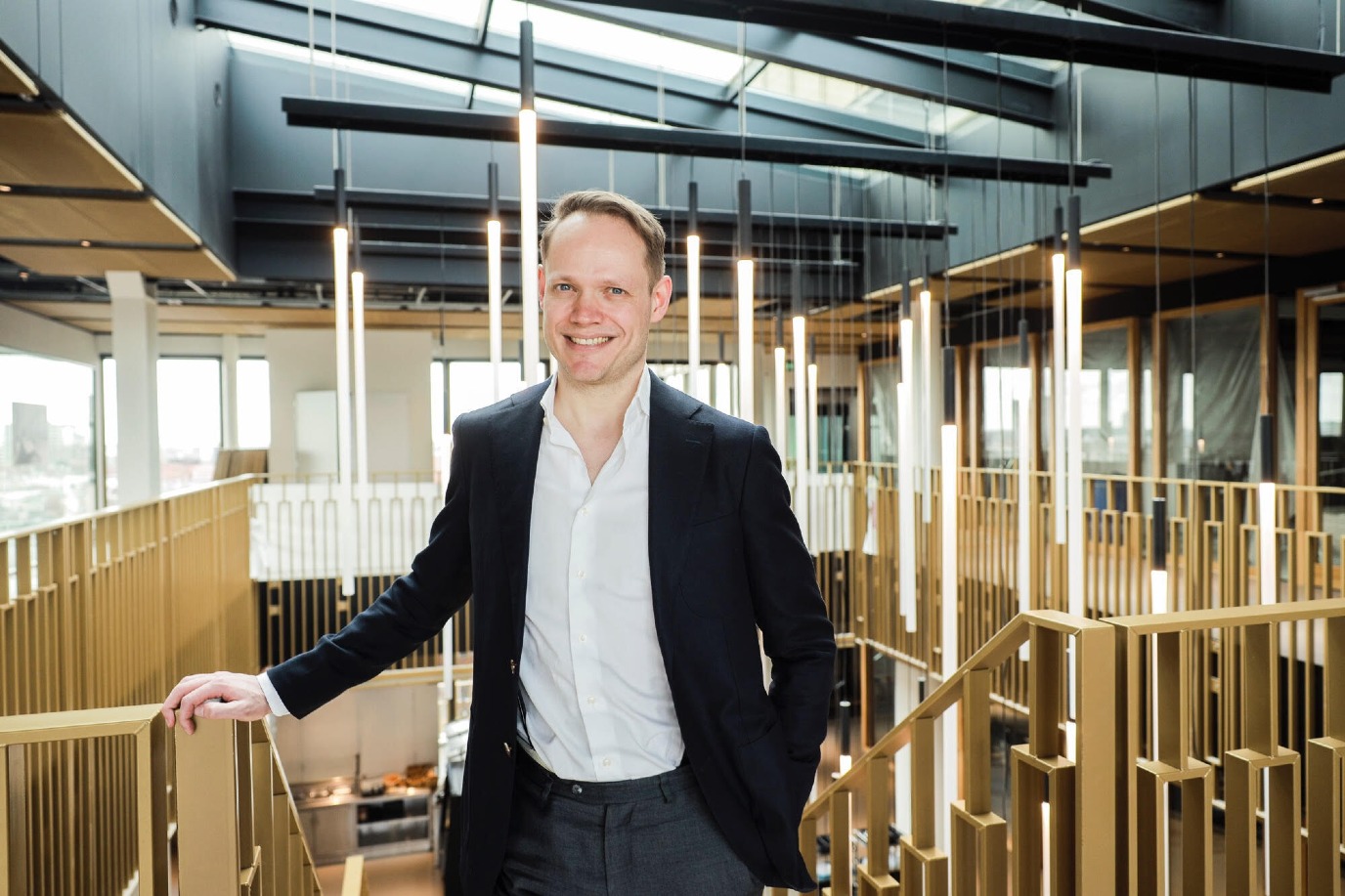Gap between city and region widens. ‘Since the financial crisis, property investors consider the region a risk,’ says researcher Dr. Michiel Daams.

Property investments are proving to be an important explanation for the gap between large cities and the region, says Michiel Daams, assistant professor of Economic Geography of Real Estate Markets. He carried out a study on property investments in the United Kingdom and the United States. According to Daams, the same situation may apply to the Netherlands. ‘Since the financial crisis, investors have been stashing their cash under the mattress of the big cities, while the region lags behind.’
Text: Jelle Posthuma / Photos: Henk Veenstra
dr. Michiel Daams is theme director of the 'Sustainable Landscapes and Regions' theme of the Rudolf Agricola School for Sustainable Development.
The property market— Daams’ area of expertise— has been under a microscope for years due to the current housing crisis. In the current market, house seekers are faced with increasing house prices and high rents. ‘On the one hand, you could generally argue that the Netherlands are doing well: a lot of people want to live here, , because there is a high demand', says Daams. ‘On the other hand, we are facing a huge challenge. An inadequate housing supply affects the foundations of our existence. Everyone wants a roof over their head.’
In his research, Daams mainly focuses on the economic geography of commercial property and land markets. ‘It is about the places where we live, work, and engage in recreational activities. How can we future-proof our space? That is the key question. The property field is incredibly broad, bringing together various aspects spanning from investment to policy. It encompasses up to eighty percent of the value of all tangible property in developed countries. In short, property projects, shape our everyday lives. That makes it a fascinating research field.’

As a student and, later, PhD student, Daams focused on nature and land use. ‘Nature is land related, but there is also a human side to it. In my research, I asked how people value nature. The property market turned out to be a good indicator for this. House prices show us how people value nature. By demonstrating this relationship, we can also better justify public investments in nature. This question led me to the property analysis.’
Before that, there were no useful tools to measure the relationship between valuable nature and house prices, according to Daams. During his PhD research, Daams addressed the question of how we can get a better grip on the value of nature? ‘There were models available that, for example, included the vicinity of a park or a forest in the house price. A park within five hundred metres would then mean an increase of the price. But these models had no clue as to what defines an attractive park. No two parks are the same: the little park around the corner does not compare to the Noorderplantsoen, for example.’
In other words: a suitable model for the analysis did not exist. With the help of the Greenmapper survey developed by his co-supervisor, Frans Sijtsma, Daams discovered which nature areas Dutch people value most. ‘This way, we were able to include the human side in our property models. ‘Surprisingly’, the effect of nature on house prices does not stop at five hundred metres. The most attractive nature areas even affect the prices of houses some seven kilometres away. That includes a lot more houses than previous studies showed. For me, it all started with this analysis.’

Financial crisis
Recently, Daams published the first results of a large scale study into the difference between property investments in big cities and the region. Together with his fellow researchers, he studied large investments in commercial properties in the United Kingdom and the United States. ‘These investments are long-term and land related. They reveal how the broader financial market looks at regions. We can see that the gap between cities and regions is growing on all sides, but how does this work on the commercial investors’ side? That is the question we asked ourselves.’
During the 2008 financial crisis , UK investors fled to London en masse with their money, says Daams. The same happened in the United States with the big American coastal cities. ‘Investors thought that, if the economy would collapse, they would be relatively safe there. In the beginning of the crisis, London-based trade offices were extremely busy
Risks
After the crisis, the economy recovered steadily, but investors remained in the big and already rich cities, Daams' study reveals.. ‘This has been going on for fifteen years now. Investors have been stashing their cash under the mattress of the big cities, while the region lags behind.’ For investors, it is all about risks, he explains. ‘Since the financial crisis, significant differences have emerged between the risk analyses for big cities and the region. In the United Kingdom, peripheral regions are even regarded by investors as so-called junk bonds, i.e. very risky bonds.’
This unequal assessment leads to significant disparities within a country, says Daams. ‘'The risk gap for an investment in a region in the UK versus in London is appraised by investors as identical to the gap between national investments in the UK versus Romania or Chile. In the US, we observe the same scenario for the major coastal cities and the rest of the country. Before the crisis, there were also differences between large cities and the region, but the risks were assessed much more equally. The financial crisis really brought about a system change.’
According to Daams, this indicates that the region will have to incur high costs in order to attract private investments which are necessary for growth and economic activity. ‘The picture that we paint in our research is acknowledged and recognized on all fronts by people in the field, from policy makers to investment banks. We have not conducted any research in the Netherlands yet, but it is possible that the same is happening here. Just look at cities like Amsterdam and relatively less strong regions.’

Speaking the same language
It is up to policy makers to bring private funds back to the region, Daams continues. ‘They will have to woo investors. To achieve this, they need to speak the same language. Our research plays a part in this: by substantiating and quantifying how investors think about regions, you can jointly consider measures.’ The same applies to the housing market, says the assistant professor. ‘Investors who are focused on returns are sometimes looked upon with envy, but this is also simply how the market works. In the end, the big money is needed to build on a large scale. It is up to researchers to supply knowledge, so policy makers and investors can find more common ground.’
Daams also emphasizes the importance of bringing experts together in order to jointly look for practical solutions. ‘I do not have a conclusive answer to the housing crisis. The housing market is subject to a multitude of factors. We will have to bring together multiple disciplines to find the answer to that problem. At the moment, the landscape of experts is still very fragmented. In order to reach collective analytical capacity, we need to interconnect and pool knowledge. The same applies to connecting the market with policy.’
Rudolf Agricola School
At the Rudolf Agricola School for Sustainable Development, one of the four Schools of Science & Society of the University of Groningen, Daams plays this connecting role as well. He is Director of the Sustainable Landscapes and Regions theme. ‘Together with our team, I try to connect our fellows— over two hundred and fifty researchers affiliated with the four research themes of the Rudolf Agricola School,— with each other and with third parties, for powerful, interdisciplinary science and impact.’
For example, with academic ‘impact products’, the School connects policy, research, and citizens. Daams mentions, among others, a digital platform that brings together insights from landscape experts. ‘This leads to a cross-curricular understanding of big challenges and possible solutions for better biodiversity in livestock farming areas. Besides this, strategic ties with partner universities are strengthened by interdisciplinary PhD programmes, to empower the fellows and their interdisciplinary research groups in our School. Contributing to this is highly rewarding.’
More information
Capital shocks and the great urban divide, in: Journal of Economic Geography, Volume 24, Issue 1, January 2024,
More news
-
15 September 2025
Successful visit to the UG by Rector of Institut Teknologi Bandung

